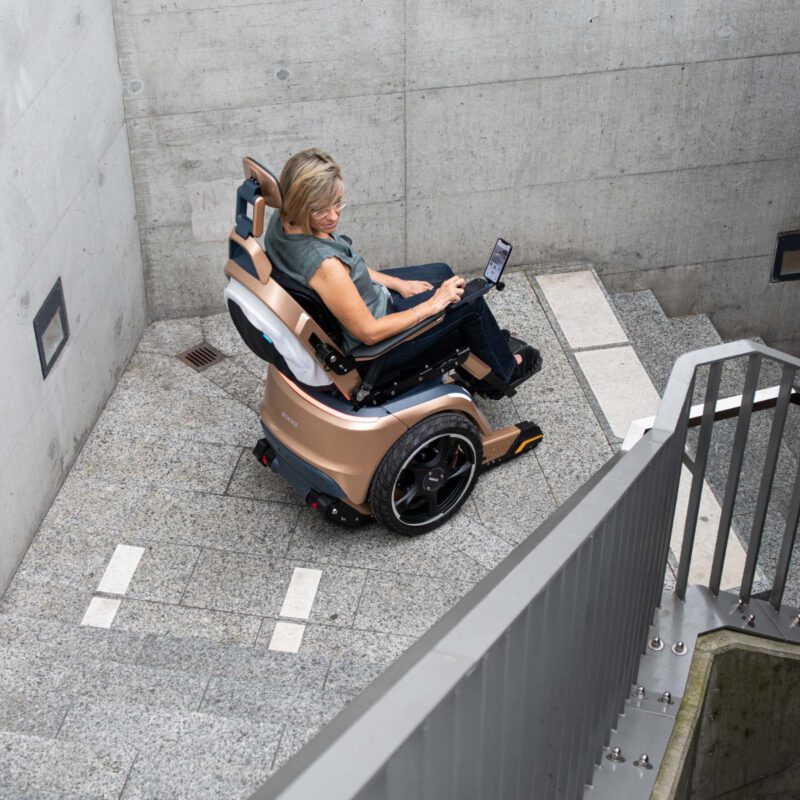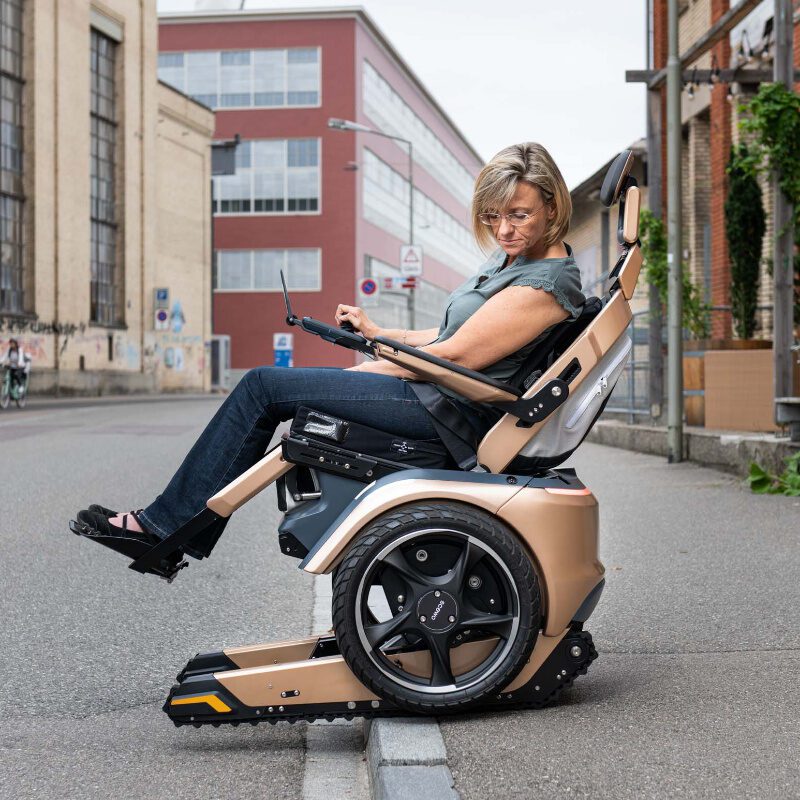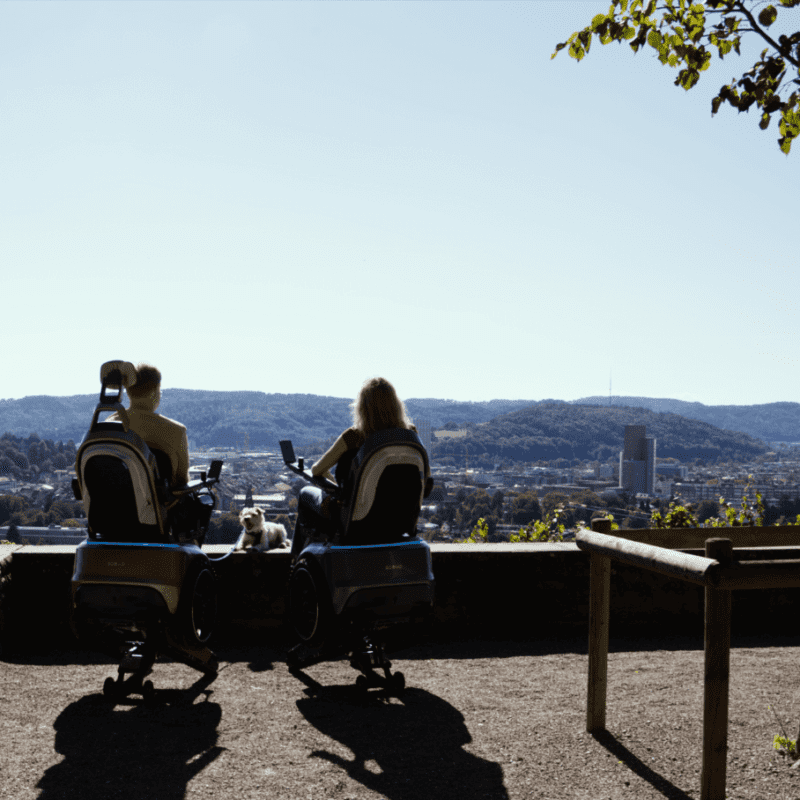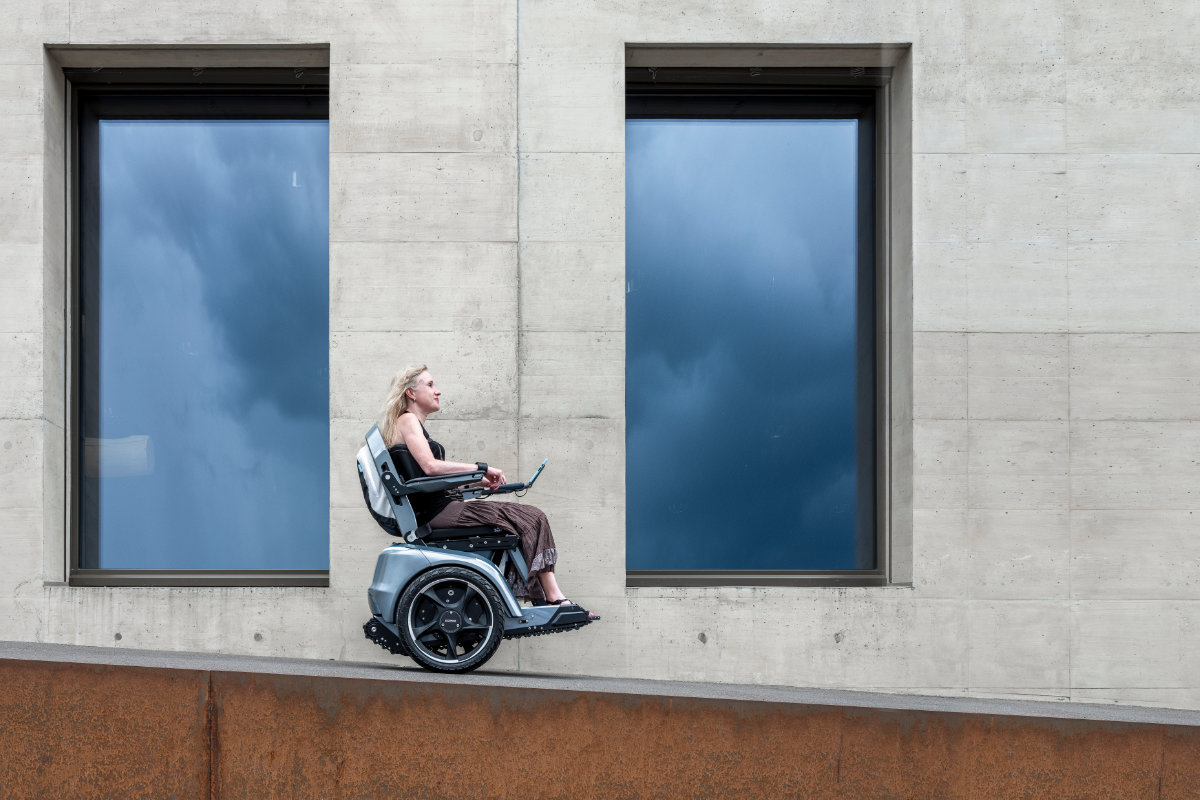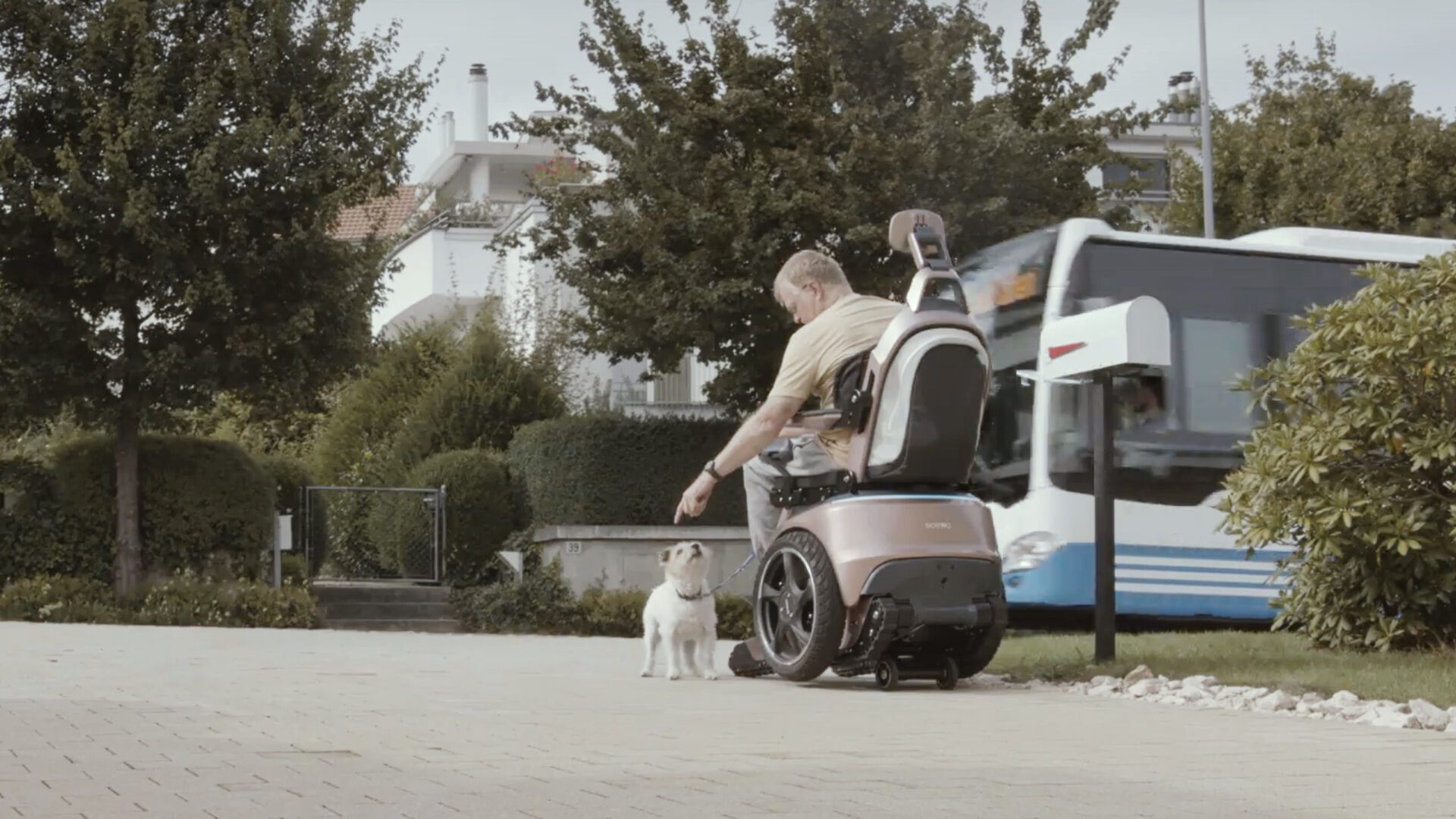
Using a bus, train or tram with a power wheelchair
Wheelchair users are faced with many obstacles when using public transportation. Many trains, buses and trams, especially the older ones, are often impossible to board without assistance. If you want to travel stress-free from A to B, there are a few things to keep in mind. We asked our community and have put together some tips and tricks for you.

Accessible thanks to ramp
In many trains, buses and trams there is an area that is specially reserved for wheelchair users. There are also wheelchair buttons on the inside and outside to signal to the driver that “I need assistance”. If you do need assistance, it is also recommendable to board as far to the front as possible. This way you can get the driver’s attention. The doors equipped with a ramp can be recognised by the wheelchair sign.
Travelling by train
If you require assistance getting on or off a train in Switzerland, you must arrange this at least one hour in advance. SBB provides a toll-free number for this purpose. All larger stations, also called support stations, are equipped with a lifting platform. These stations are indicated on this map. There you will also find information about the infrastructure, meeting points and contact details in case you require further assistance.
Other countries like Germany or the Netherlands offer a comparable service. How the service works differs from country to country. This information can be found on the respective railway operator’s website.
Here are a few links to various railway operators:
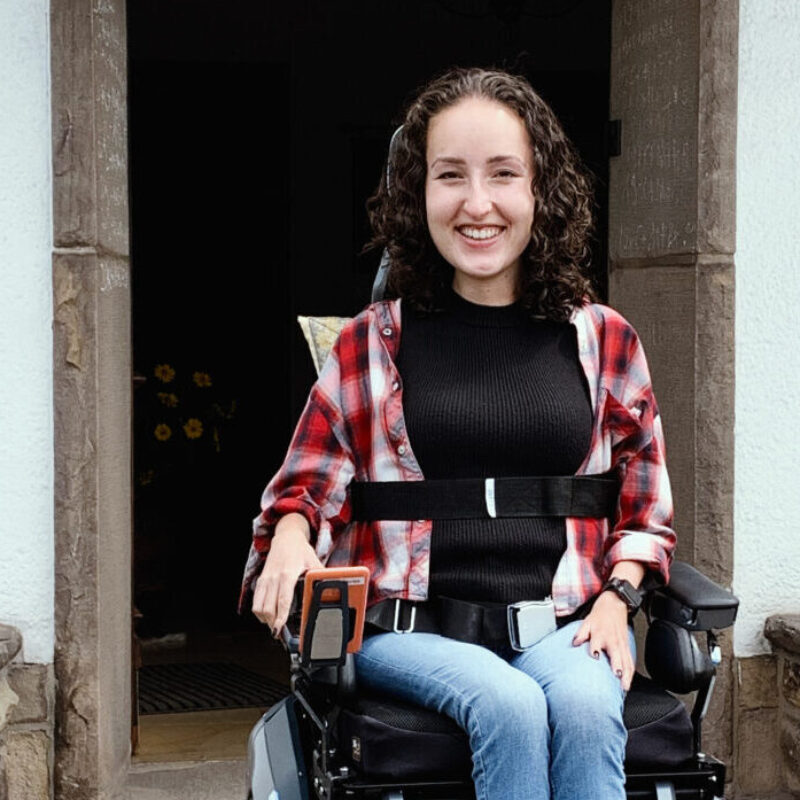
Riding a bus with an electric wheelchair
Today, many buses in Switzerland are lowerable, but even then, a step remains at the entrance. There are also still bus stations that are not suitable for people in wheelchairs or bus routes that only transport hand wheelchair users. It is therefore advisable to always check the connections beforehand and see whether the stations and the means of transport are wheelchair-accessible. In Switzerland, almost all buses are equipped with a ramp (usually at the second door from the front), which can be folded out by the bus driver for getting on and off the bus.
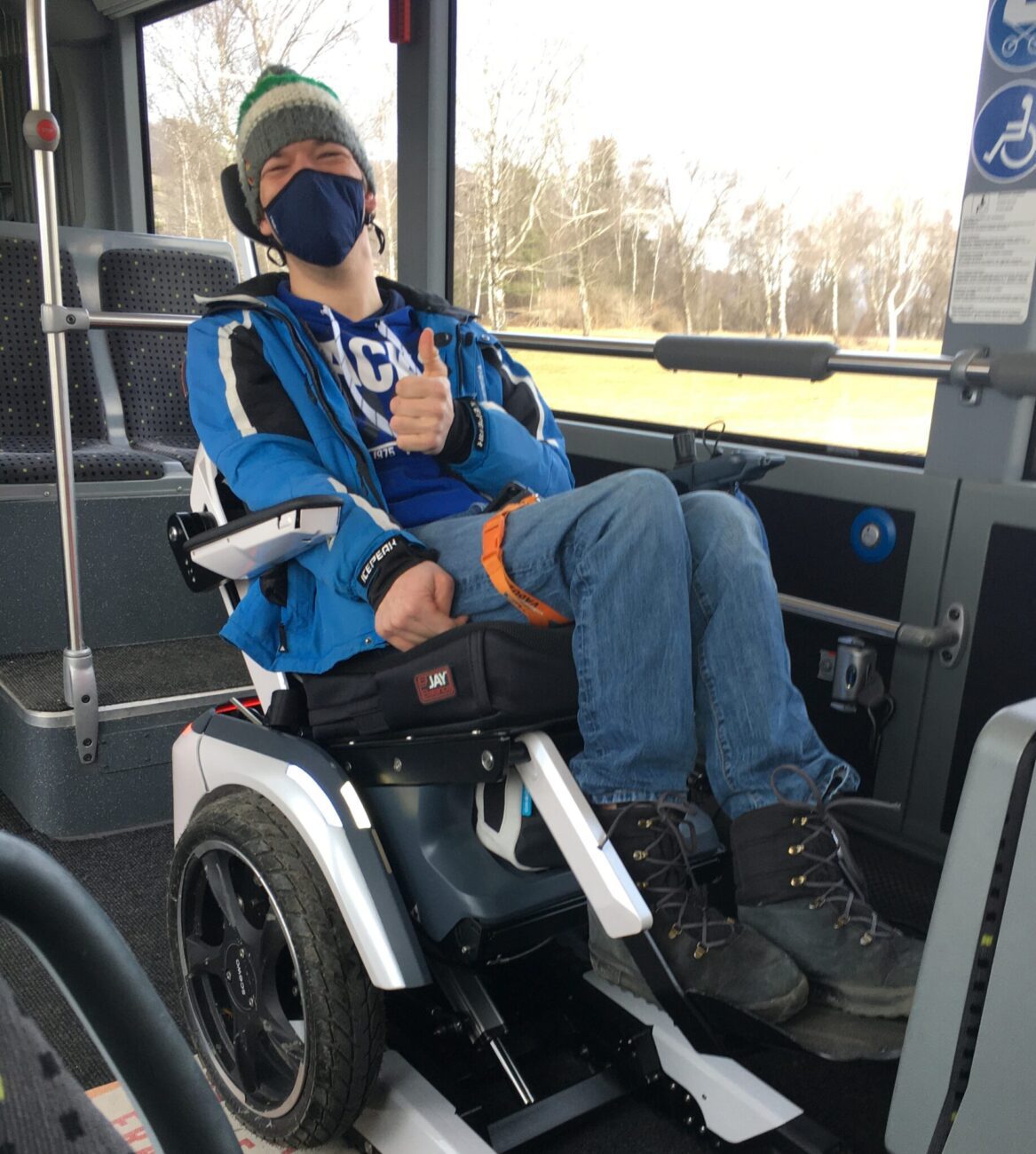
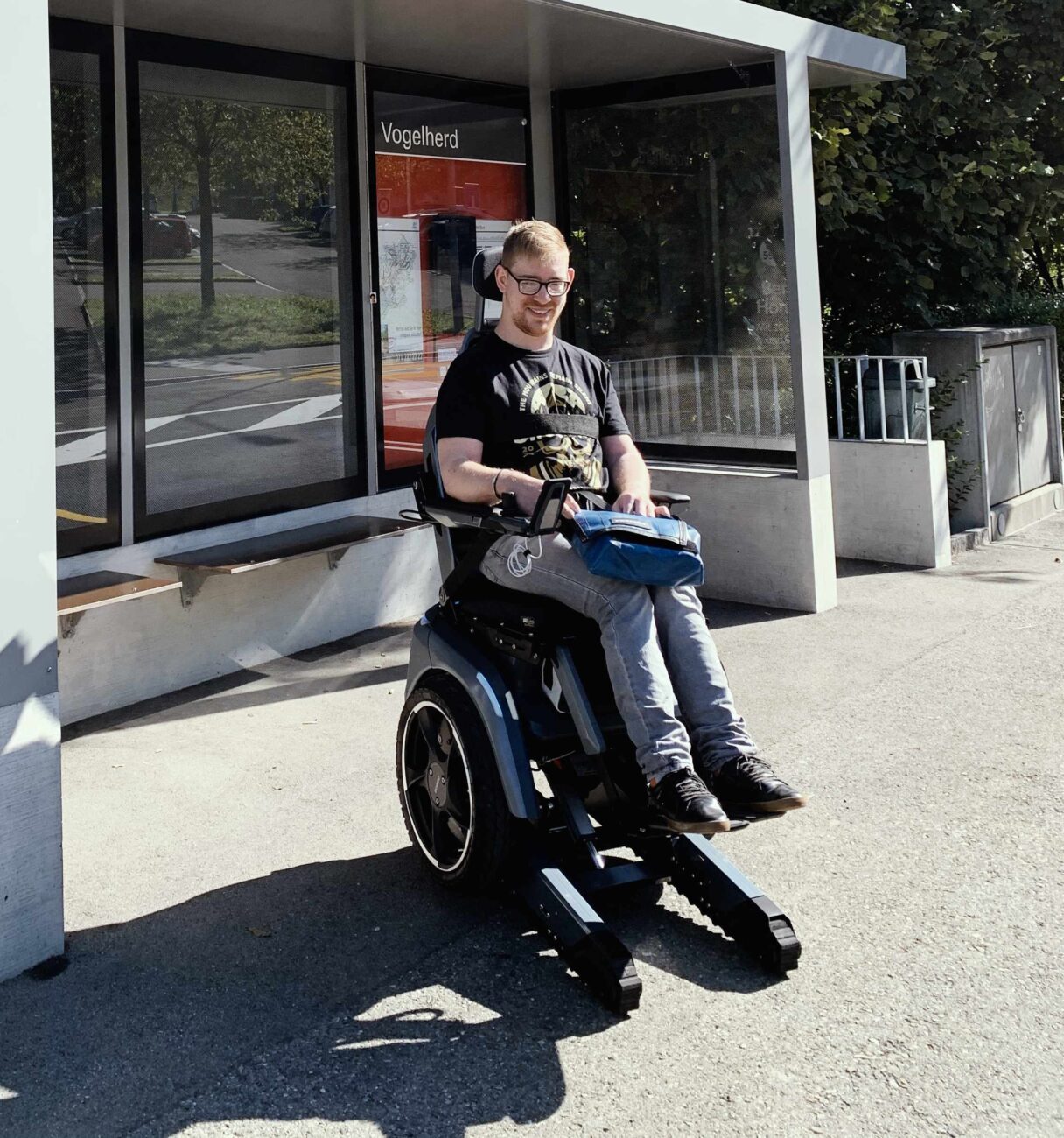

Using a tram with an electric wheelchair
In the city of Zurich and its agglomeration, at least every second tram provides step-free access. Not only buses, but also many trams in Switzerland and Germany are now equipped with fold-out ramps. However, not all stops are suitable for people with reduced mobility. Here, too, it is advisable to consult the website of the respective transport association before setting off and to check whether the stops are wheelchair-accessible. You can find information about whether a tram is suitable for wheelchair users in the timetable or sometimes also on the display boards at the stops.
Here you can find SBB guidance on how to determine which means of transport are barrier-free.

On the move with BRO on public transport
Wheelchair user Sara’s biggest concern is that the lift at the station doesn’t work or that she can’t negotiate steps. This is where BRO’s stair mode comes into its own and provides an alternative. You can even use it to access stations that are lagging far behind in terms of accessibility.
Like other power wheelchairs, BRO is suitable for use on public transport. Since BRO only has two wheels, there is no danger of getting stuck in small gaps, for example. Nevertheless, there are a few things to keep in mind. These can be found in the operating instructions.
If you are unsure, for example, whether you can use your BRO to commute to work using public transport, please do not hesitate to contact us. We have already tested several means of transport and a number of stations, and more are being added all the time.
Do you have experience to share?
Do you have any further tips for using public transport with an electric wheelchair? Or did you come across a station that cannot be accessed without BRO?
